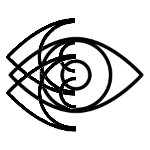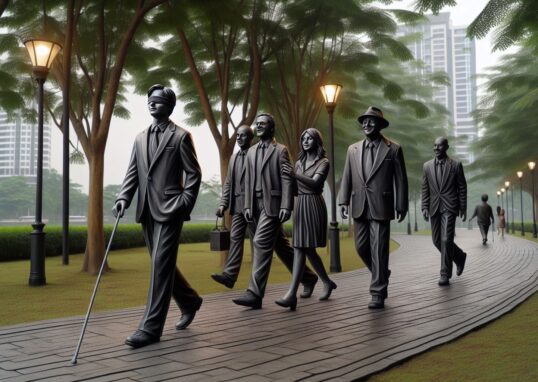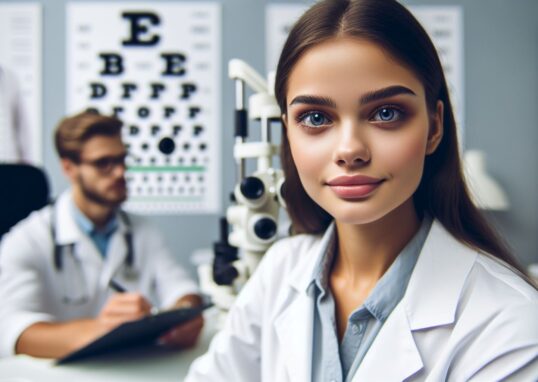Are you curious about what to expect after you have LASIK? Recovery time, side effects, aftercare instructions—we’re going to go over all that in this video. What to expect days, weeks, months, and years after you have LASIK, let’s focus in now. Before we get started, definitely follow the instructions given to you by your eye physician. Every patient is different, so a lot of the aftercare instructions might vary from person to person. Now, what you’ll find in this video are kind of generic guidelines of what to expect after LASIK and aftercare instructions, but each person may be different. This was originally posted by Dr. Neal Guymon’s video on Dr. EyeGuy Youtube channel.
Day 1 after LASIK:
Now what’s nice about LASIK it’s one of the faster recovering laser eye surgeries that you can have done. In fact, some people right after they have LASIK notice that their vision is actually doing pretty well, maybe a couple of hours after the surgery. Now this might not be typical for everybody, but the recovery time for your vision should be pretty fast. So maybe on that first day, you’ll notice that your vision may be doing pretty well, but don’t be devastated if it doesn’t, because a lot of people might take a day or two, or a few days to recover. Now the comfort of your eyes on that first day, you’ll probably notice that your eyes will be red, they’ll definitely be dry, might have a gritty feeling, mild irritation, maybe even a little bit of mild pain on that first day. Now as far as the do’s and the don’ts of that first day, the instructions of the first day: definitely going to expect that you’re going to have some eye drops prescribed to you. Now usually, you’ll have antibiotic eye drops just to make sure that your eye doesn’t get an infection, you’ll usually have a steroid eye drop to decrease inflammation, and you’ll definitely have artificial tears to keep the eye lubricated. Don’t underestimate the artificial tears; stay on top of those artificial tears. Likely you’ll be given an eye shield that you’re going to wear that whole day, you’re going to sleep with it. That’s just to protect the eye from accidentally rubbing the eye too hard or poking the eye that could possibly lift up that flap that you got from getting the LASIK eye surgery, so it’s just an extra protection that you’ll be wearing all day. You might look funny all day, but hopefully, you just go home and nobody really sees you. And usually what you want to do that first day is just go home, take it easy, Netflix and chill. You want to maybe take a nap; you’re pretty much going to want to keep your eyes closed except for when you’re doing eye drops. Basic thing is you just want to take it easy. You want to stay away from staring at a computer screen, stay away from staring at your phone or the TV because when you’re staring at something, your eyes won’t blink, and they can dry out and might feel irritated, especially after you just had LASIK. So just for that day, plan to go home, take it easy, take a nap, lay down, close your eyes, just Netflix and chill. Listen to Netflix and chill. Also, make sure that you have a driver to take you to the surgery and take you home; you won’t want to be driving right after you have LASIK eye surgery.
Day 2 after LASIK:
Your vision, now this is where a lot of people notice that their vision will be getting a lot clearer with both eyes. Now, it’s okay if you don’t, don’t worry if it’s not clear that next day. You’ll also notice that there might be fluctuation in their vision, so sometimes during the day it’ll be clear, they may be blurry, that’s completely normal. You’ll also notice glares and halos, especially at nighttime, so definitely expect that. But hopefully on day two, vision is definitely getting clearer. Hopefully with your comfort, you’ll still probably notice that your eyes are red, probably still have that mild irritation, dryness for sure, the pain should be better because what’s nice about the eyes is they can heal really, really fast. So hopefully by that next day, pain or mild pain should be better if not gone. Now on this day, you should expect to go to a follow-up appointment with your eye doctor. They’ll make sure that the eye is healing right, check to see where your vision’s at, check the flap of the cornea if they put a bandage contact lens right after the surgery on there, they’ll take that bandage contact lens out, and then they’ll give you further instructions for the rest of the week. Now as far as the do’s and the don’ts, usually you can start resuming your normal activity. If you want to read a book, look at your phone, watch TV, use the computer, but a word of caution here: you definitely want to be careful, make sure that you’re using artificial tears, make sure that you take breaks frequently. A lot of times when we are staring at a screen, our blink rate drops way down, our eyes can dry out, and so just be careful and be aware of your eyes and dryness and everything. In fact, a lot of doctors might just say just avoid all that for a week to let the eye seal up which is probably good, but if you need to, make sure that you use your teardrops, take breaks, remember to blink, just be careful there. Definitely avoid physical workouts, physical exertion, working out in the yard where something might flick up and hit your eye and maybe get under that flap, who knows what. You might still be using your eye shield on day two; sometimes doctors will say, hey, it’s okay, just be careful, don’t rub your eyes, but you’ll definitely still be sleeping with that eye shield for sure. Now you may be able to not wear your eye shield, but sometimes they’ll have you wear your eye shield even on day two just to protect your eyes from accidental eye rubbing. If you’re not wearing an eye shield during the day, try and avoid any eye rubbing, knuckle digging, or even just kind of gentle eye rubbing just to kind of protect that flap a little bit. You’ll still likely be wearing the eye shield when you sleep though. You’re going to avoid swimming; you’ll probably avoid swimming for at least three weeks. You’re going to avoid showering to get any direct contact of water in the eye. You’ll likely still be using the same regimen of eye drops. And also make sure that you’re wearing sunglasses when you go outside; you may be a little bit more light-sensitive right after the surgery. But one big one they’ve actually found that UV damage to the tears and the eyes can actually delay healing time, so by wearing sunglasses your healing can actually heal a little bit faster and also heal a little bit better, so make sure that you’re wearing sunglasses when you go outside. Now one question a lot of people ask me is hey, when can I return to work? You definitely want to take that first day off. I would say the first couple of days I would take work off, but usually after a couple of days, you should be able to return to work. You may still experience fluctuations in your vision, so it depends on actually what work you have, but maybe you can assess that, but if you feel like you can accomplish the tasks with visual fluctuations, I’d say go for it, just make sure you can still do your eye drops okay.
1 week after LASIK:
After having LASIK, your vision should be looking a lot clearer. You should be noticing a steadily improving vision throughout that week. If your vision wasn’t clear that first day or second day, by the end of that first week, it should be looking a lot clearer. Now, you likely still will be experiencing fluctuations in your vision. Also, you’ll still likely have the glare and halos at night. Comfort of the eye should be feeling a lot better; the eye redness should be a lot less, but likely, you’ll still be experiencing dryness. You should still be using the artificial tears quite a bit, so that’s one thing to expect. The dryness definitely is the comfort issue that lingers a little bit longer, but redness, maybe the pain, all that irritation should be way better. But the dryness is the one thing to expect. Now, as far as the do’s and don’ts or the instructions for that first week, you may still be wearing your night eye shields when you’re sleeping. You likely won’t be wearing them during the day, but still may have them at night. Still avoid eye rubbing; avoid that for at least a month. For this first week, you’re still avoiding showering direct water contact, even if you’re in the tub, and that’s within reason; I mean, you still have to bathe and clean yourself, but just try and avoid the direct water contact into the eyes. You’re going to avoid swimming; you’re going to avoid hot tubs; you’re going to avoid that for probably likely a month, three weeks to a month. You’re also still avoiding eye makeup; likely gonna avoid that for at least three weeks. Now, for the first week, still want to be careful on screens, computer, phone, TV; you want to be taking those breaks, making sure that you’re blinking, using those artificial tears just to help your eyes heal better, make sure that your eyes don’t get more dry than they need to be. Now, after that first week, you’ll have another follow-up appointment with your eye doctor to make sure that the eye is healing, vision stabilizing, flap looks good. So yeah, you’ll be having these follow-up appointments; you’re going to get sick of eye doctors after a while, but yeah, they just want to make sure everything is going just right.
1 month after LASIK:
This is where you’ll notice that your vision should be stabilizing. You’ll have fewer fluctuations; you’ll also start noticing that maybe the halo and the glares are reducing or getting better at nighttime. So the month mark is usually a really good mark to measure stability, and the vision should be a lot clearer. And yeah, like I said, having a lot less fluctuations, comfort redness should be a lot better. The one thing that you might still be experiencing at this point is dryness. Now, like I said, dryness can sometimes linger a long time after you have LASIK, but a lot of people will start to notice that their dryness has improved by this point. You still want to be using the artificial tears, but just that might be one thing to expect at that month mark; you still might be experiencing dryness. Now, with the instructions and do’s and don’ts, usually by the month mark, you’ve tapered off your antibiotic drops and your steroid eye drops but still will be likely using your artificial tears like I said. Now, you’ll also likely have another follow-up appointment with your eye doctor; make sure everything’s healing up okay, make sure it’s okay to taper off the antibiotic and steroid drops, check the dryness, check the flap, just to make sure everything is good. Now, the month mark, a lot of times you can start using your makeup again, you can start showering like you normally do, you can start bathing like you normally do, you can start working out, you likely have started already working out weeks before but at the month mark is where a lot of things have stabilized and you’re back to your kind of normal routine. Now, there still are a few things that you want to avoid eye rubbing deep eye rubbing, swimming out in the ocean or swimming in a lake hot tub use just be careful with all of that, direct water contact still but yeah most of what you’re going to be doing is back to normal at the month mark.
Long-term after LASIK:
Now, as far as follow-up appointments, a lot of eye doctors will have you follow up at three months, six months, maybe a nine-month follow-up, a year follow-up just to keep tabs on you, make sure that the eye is still doing okay in the long term. You may still be instructed to use artificial tears, especially if you’re having symptoms of dry eyes. Now, most people by the six-month mark, the dryness is way better, the corneal nerves have healed back. There are some people in the 6 to 12-month mark where they’re still having improvement with their dryness symptoms, and there are some people that have long-lasting dry eye effects, so that’s just one thing to consider. Also, in the long term, in the year, maybe the year and a half, there may be some people that have a little bit of their prescription that comes back, maybe they get a little bit nearsightedness. Now, a lot of times these people can be a candidate for an enhancement where they can go back to the eye surgeon, they can reopen that flap and do a little bit of a touch-up LASIK to kind of take care of that little bit of prescription that came back. Totally depends on the person and the condition and their prescription, but that’s something to keep your eye on, and that’s also why you go back for those follow-up appointments, just to check the vision and make sure that it’s stable. Now, one thing to mention is when you reach your 40s, this will happen to everybody, but this is when presbyopia can sneak in. Presbyopia is where you have trouble focusing up close, your eyes kind of degrade a little bit and have a hard time focusing up close on your phone or if you’re reading a book. Now, this will happen whether you have LASIK or whether you don’t have LASIK, so if you’ve had LASIK, your vision’s been great and then you get into your 40s and you all of a sudden can’t see your phone or you’re having to kind of back up the phone doing the trombone thing, that’s completely normal. It stinks, but it’s completely normal. It’s not because of the LASIK, but yeah, that’s just one thing to expect, happens to us all. Now, as far as long long-term with LASIK, years to come, just enjoy your vision. You’re going to have clear vision in both eyes, you’re going to see things without wearing glasses and contact lenses, it’s great. Now, one thing to always consider before you have LASIK and one thing that you could possibly have and that’s dryness. There are some people, it’s probably a low amount of people, but they could have long-lasting dryness effects or corneal nerve problems where they might have a little bit of pain or nerve damage, again, small small percentage that might have LASIK, but that’s something to consider in the long term that could be a long-lasting effect, so you might be using artificial tears for your eye dryness long term, so maybe a year or two years down the road. So, that’s just something to consider. Now, there are a bunch of different variables that can cause dryness down the road and so I don’t want to just go out and say, “Hey, your LASIK is going to be the cause of your dryness.” Now, it could be many many different things and a combination of different things, but that’s just one thing to consider that it could happen. So, overall, visual recovery time, that first few days, a week, maybe a month, you should be seeing quite clear, it should recover fast, and like I said, it’s one of the faster laser eye surgery recovery times that you can ever get. Now, irritation recovery time, you might have irritation, mild grittiness that first month, it should gradually get better, but as far as pain goes, pain should be really quick, really fast to heal up. But like I said, irritation, gritty dryness feeling might last a while. Now, remember, at any time in between your follow-up appointments, so let’s say between your one-month follow-up and your three-month follow-up appointment, if you have eye pain or your vision really takes a decline all of a sudden, go in and see your eye doctor. I wouldn’t even wait for a follow-up appointment, you just want to make sure that everything’s going okay. So, just make sure if anything goes weird, go get it checked out.






